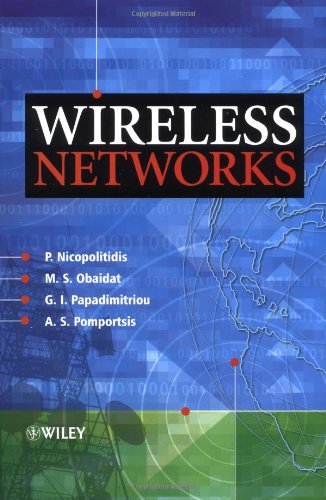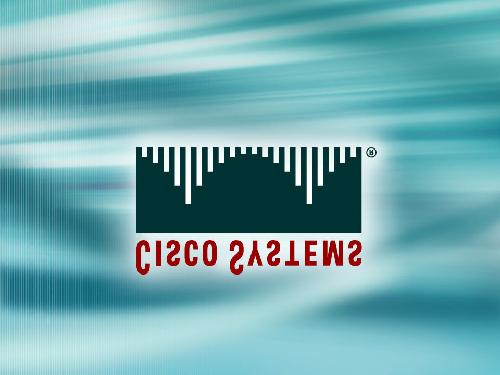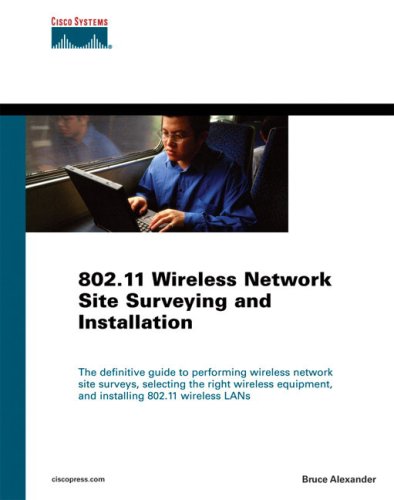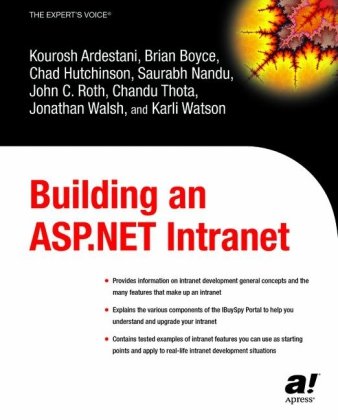Georgios I. Papadimitriou, Andreas S. Pomportsis, P. Nicopolitidis, Mohammed S. Obaidat9780470845295, 0470845295
Table of contents :
WIRELESS NETWORKS……Page 5
Copyright……Page 6
Contents……Page 9
Preface……Page 17
1 Introduction to Wireless Networks……Page 19
1.1.1 Early Mobile Telephony……Page 20
1.1.2 Analog Cellular Telephony……Page 21
1.1.3 Digital Cellular Telephony……Page 22
1.1.5 Wireless Data Systems……Page 25
1.1.7 Satellite Communication Systems……Page 29
1.2 Challenges……Page 30
1.2.3 Power Management……Page 31
1.2.7 Health Concerns……Page 32
1.3.1 Chapter 2: Wireless Communications Principles and Fundamentals……Page 33
1.3.3 Chapter 4: Second Generation ( 2G) Cellular Systems……Page 34
1.3.4 Chapter 5: Third Generation ( 3G) Cellular Systems……Page 35
1.3.5 Chapter 6: Future Trends: Fourth Generation ( 4G) Systems and Beyond……Page 36
1.3.7 Chapter 8: Fixed Wireless Access Systems……Page 37
1.3.8 Chapter 9: Wireless Local Area Networks……Page 38
1.3.10 Chapter 11: Personal Area Networks ( PANS)……Page 39
1.3.12 Chapter 13: Simulation of Wireless Network Systems……Page 40
References……Page 41
2.1 Introduction……Page 43
2.2 The Electromagnetic Spectrum……Page 44
2.2.1 Transmission Bands and their Characteristics……Page 45
2.2.2 Spectrum Regulation……Page 48
2.3.1 The Physics of Propagation……Page 50
2.3.2 Wireless Propagation Modeling……Page 54
2.4 Analog and Digital Data Transmission……Page 59
2.4.1 Voice Coding……Page 61
2.5 Modulation Techniques for Wireless Systems……Page 64
2.5.1 Analog Modulation……Page 65
2.5.2 Digital Modulation……Page 67
2.6 Multiple Access for Wireless Systems……Page 72
2.6.1 Frequency Division Multiple Access ( FDMA)……Page 73
2.6.2 Time Division Multiple Access ( TDMA)……Page 74
2.6.3 Code Division Multiple Access ( CDMA)……Page 76
2.6.4 ALOHA- Carrier Sense Multiple Access ( CSMA)……Page 77
2.6.5 Polling Protocols……Page 79
2.7.1 Diversity Techniques……Page 85
2.7.2 Coding……Page 89
2.7.3 Equalization……Page 92
2.7.4 Power Control……Page 93
2.7.5 Multisubcarrier Modulation……Page 94
2.8 The Cellular Concept……Page 95
2.8.1 Mobility Issues: Location and Handoff……Page 98
2.9 The Ad Hoc and Semi Ad Hoc Concepts……Page 99
2.9.1 Network Topology Determination……Page 100
2.9.2 Connectivity Maintenance……Page 101
2.9.4 The Semi Ad Hoc Concept……Page 102
2.10.1 Circuit Switching……Page 103
2.10.2 Packet Switching……Page 104
2.11 Data Delivery Approaches……Page 105
2.11.2 Push Systems……Page 106
2.11.3 The Adaptive Push System……Page 107
2.12 Overview of Basic Techniques and Interactions Between the Different Network Layers……Page 108
WWW Resources……Page 110
References……Page 111
Further Reading……Page 112
3.1 Introduction……Page 113
3.1.1 Analog Cellular Systems……Page 114
3.2.1 AMPS Frequency Allocations……Page 115
3.2.2 AMPS Channels……Page 116
3.2.3 Network Operations……Page 117
3.3.1 NMT Architecture……Page 120
3.3.3 NMT Channels……Page 121
3.3.4 Network Operations: Mobility Management……Page 122
3.3.5 Network Operations……Page 124
3.3.6 NMT Security……Page 125
References……Page 127
4.1 Introduction……Page 129
4.2 D- AMPS……Page 131
4.2.2 Radio Transmission Characteristics……Page 132
4.2.3 Channels……Page 133
4.2.4 IS- 136……Page 134
4.3.1 cdmaOne Protocol Architecture……Page 135
4.3.3 Channels……Page 136
4.3.4 Network Operations……Page 138
4.4 GSM……Page 139
4.4.1 Network Architecture……Page 140
4.4.3 Radio Transmission Characteristics……Page 143
4.4.5 Network Operations……Page 147
4.4.6 GSM Authentication and Security……Page 150
4.5.1 Network Architecture……Page 151
4.5.2 Inter- system Handoff……Page 152
4.5.3 Automatic Roaming……Page 153
4.6.1 CDPD……Page 154
4.6.3 GPRS……Page 156
4.6.4 D- AMPS1……Page 157
4.6.6 TCP/ IP on Wireless- Mobile IP……Page 158
4.6.7 WAP……Page 160
4.7.1 Analog CT……Page 161
4.7.3 Digital Enhanced Cordless Telecommunications Standard ( DECT)……Page 162
4.8 Summary……Page 165
References……Page 166
5.1 Introduction……Page 169
5.1.1 3G Concerns……Page 171
5.2.1 Spectrum Requirements……Page 172
5.2.2 Enabling Technologies……Page 175
5.3 Third Generation Service Classes and Applications……Page 176
5.3.1 Third Generation Service Classes……Page 177
5.3.2 Third Generation Applications……Page 178
5.4.1 Standardization Activities: IMT- 2000……Page 179
5.4.2 Radio Access Standards……Page 180
5.4.3 Fixed Network Evolution……Page 201
5.5 Summary……Page 203
References……Page 204
Further Reading……Page 205
6.1 Introduction……Page 207
6.2 Design Goals for 4G and Beyond and Related Research Issues……Page 208
6.2.1 Orthogonal Frequency Division Multiplexing ( OFDM)……Page 210
6.3 4G Services and Applications……Page 213
6.4 Challenges: Predicting the Future of Wireless Systems……Page 214
6.4.2 Trends for Next- generation Wireless Networks……Page 215
6.4.3 Scenario 1: Anything Goes……Page 216
6.4.4 Scenario 2: Big Brother……Page 217
6.5 Summary……Page 218
References……Page 219
7.1.1 Historical Overview……Page 221
7.1.2 Satellite Communications Characteristics……Page 222
7.1.3 Spectrum Issues……Page 223
7.1.4 Applications of Satellite Communications……Page 224
7.2 Satellite Systems……Page 225
7.2.1 Low Earth Orbit ( LEO)……Page 226
7.2.2 Medium Earth Orbit ( MEO)……Page 227
7.2.3 Geosynchronous Earth Orbit ( GEO)……Page 228
7.2.4 Elliptical Orbits……Page 230
7.3 VSAT Systems……Page 231
7.4.1 Iridium……Page 233
7.4.2 Globalstar……Page 238
7.5.1 Architectures……Page 240
7.5.2 Routing Issues……Page 242
7.5.3 TCP Enhancements……Page 243
7.6 Summary……Page 244
WWW Resources……Page 245
Further Reading……Page 246
8.1 Wireless Local Loop versus Wired Access……Page 247
8.2.1 Multichannel Multipoint Distribution Service ( MMDS)……Page 249
8.2.2 Local Multipoint Distribution Service ( LMDS)……Page 250
8.4 Wireless Local Loop Interfaces to the PSTN……Page 252
8.5 IEEE 802.16 Standards……Page 253
8.6 Summary……Page 255
References……Page 256
9.1 Introduction……Page 257
9.1.2 Wireless LAN Applications……Page 258
9.1.3 Wireless LAN Concerns……Page 259
9.2 Wireless LAN Topologies……Page 261
9.3 Wireless LAN Requirements……Page 263
9.4.1 The Infrared Physical Layer……Page 265
9.4.2 Microwave- based Physical Layer Alternatives……Page 267
9.5 The Medium Access Control ( MAC) Layer……Page 274
9.5.1 The HIPERLAN 1 MAC Sublayer……Page 275
9.5.2 The IEEE 802.11 MAC Sublayer……Page 278
9.6.2 802.11b……Page 285
9.6.4 Other Ongoing Activities within Working Group 802.11……Page 286
9.7 Summary……Page 287
References……Page 289
Further Reading……Page 290
10.1.1 ATM……Page 291
10.1.2 Wireless ATM……Page 293
10.2 Wireless ATM Architecture……Page 294
10.2.1 The Radio Access Layer……Page 295
10.2.2 Mobile ATM……Page 296
10.3.1 Network Architecture……Page 298
10.3.2 The HIPERLAN 2 Protocol Stack……Page 299
10.4 Routing in Wireless Ad Hoc Networks……Page 305
10.4.1 Table- driven Routing Protocols……Page 306
10.4.2 On- demand Routing Protocols……Page 309
10.5 Summary……Page 313
References……Page 314
11.1.1 Historical Overview……Page 317
11.1.2 PAN Concerns……Page 319
11.1.3 PAN Applications……Page 320
11.2.1 The Bluetooth Speci . cation……Page 321
11.2.2 The Bluetooth Radio Channel……Page 324
11.2.3 Piconets and Scatternets……Page 325
11.2.4 Inquiry, Paging and Link Establishment……Page 327
11.2.5 Packet Format……Page 328
11.2.6 Link Types……Page 329
11.2.7 Power Management……Page 331
11.2.8 Security……Page 332
11.3 Commercial Alternatives: HomeRF……Page 333
11.3.1 HomeRF Network Topology……Page 334
11.3.3 The HomeRF MAC Layer……Page 336
11.4 Summary……Page 341
Further reading……Page 343
12.1 The Need for Wireless Network Security……Page 345
12.2 Attacks on Wireless Networks……Page 346
12.3 Security Services……Page 348
12.4 Wired Equivalent Privacy ( WEP) Protocol……Page 349
12.5 Mobile IP……Page 352
12.6 Weaknesses in the WEP Scheme……Page 353
12.7 Virtual Private Network ( VPN)……Page 354
12.7.2 Layer- 2 Transport Protocol ( L2TP)……Page 355
12.8 Summary……Page 356
References……Page 357
13.1 Basics of Discrete- Event Simulation……Page 359
13.1.4 Veri . cation and Validation ( V& V)……Page 362
13.1.5 Applications and Experimentation……Page 363
13.2 Simulation Models……Page 364
13.3 Common Probability Distributions Used in Simulation……Page 366
13.4.1 Linear- Congruential Generators ( LCG)……Page 369
13.4.4 Extended Fibonacci Method……Page 370
13.5 Testing Random Number Generators……Page 371
13.6 Random Variate Generation……Page 372
13.6.2 Rejection Method……Page 373
13.6.4 Convolution Technique……Page 374
13.7.1 Example 1: Performance Evaluation of IEEE 802.11 WLAN Con . gurations using Simulation……Page 375
13.7.2 Example 2: Simulation Analysis of the QoS in IEEE 802.11 WLAN System……Page 378
13.7.3 Example 3: Simulation Comparison of the TRAP and RAP Wireless LANs Protocols……Page 384
13.7.4 Example 4: Simulation Modeling of Topology Broadcast Based on Reverse-Path
Forwarding (TBRPF) Protocol Using an 802.11 WLAN-based MONET Model……Page 390
References……Page 396
14.1 Introduction……Page 399
14.2 Economic Bene . ts of Wireless Networks……Page 400
14.3.1 Terminal Manufacturers……Page 401
14.3.2 Role of Governments……Page 402
14.3.4 Mobile Carriers……Page 403
14.4.1 Enabling Applications……Page 405
14.5 Charging Issues……Page 406
14.5.1 Mobility Charges……Page 407
14.5.3 Billing: Contracts versus Prepaid Time……Page 409
14.5.4 Charging……Page 411
References……Page 414
Further Reading……Page 415
Index……Page 417







Reviews
There are no reviews yet.